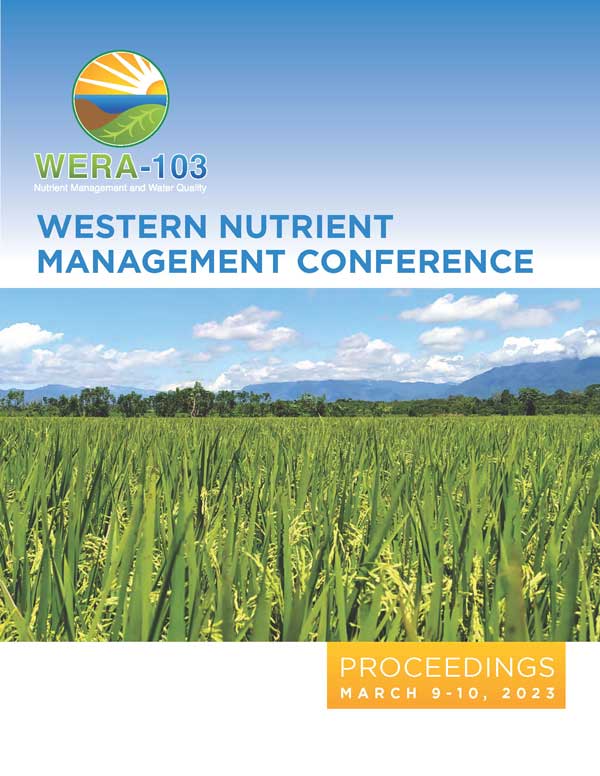Download the Conference Proceedings
Proceedings
Authors
| Filter results4 paper(s) found. |
|---|
1. Estimating Non-Fertilizer Nitrogen ContributionsCalifornia growers are facing increasing pressure to reduce nitrogen (N) losses in crop production. However, growers also need to maintain high yield levels to remain competitive. This is only possible when N inputs from all sources can be quantified and fertilizer application rates can be adjusted accordingly. The major sources of non-fertilizer N include soil residual nitrate, nitrate in the irrigation water and N mineralized during the growing season from organic material, such as soil organic... D. Geisseler |
2. Nitrogen Availability from Organic AmendmentsOrganic fertilizers and composts are valuable sources of nutrients. However, their nutrient availability is often not known and can be variable. How much nitrogen (N) becomes plant available depends on environmental factors, including temperature and so moisture, as well as the properties of the decomposing organic material. We investigated the effects of the carbon to N (C:N) ratio of different commercially available organic fertilizers and composts in a study where we mixed the materials with... D. Geisseler |
3. Biosolids-based Fertilizers as a Nitrogen Source in California Small Grains SystemsSituation/ conditions In response to regulatory and economic pressure, California growers are becoming more familiar with nitrogen budgets. In addition to seeking out ways to improve nitrogen management strategies, growers can possibly benefit by incorporating alternative sources of nitrogen to feed their crops. Liquid injected or pelletized biosolids-based fertilizers from local waste streams and processing facilities are one source that growers are beginning to explore. As... K. Mathesius, D. Geisseler, M. Savidge, M. Lundy, T. Nelson, N. Andersen |
4. Relationship Between Nitrogen Mineralization and Soil TextureSoil texture can affect soil temperature, soil moisture, the protection of organic material against microbial degradation, and other soil properties. All these factors potentially influence net nitrogen (N) mineralization. I will discuss results from a 10-week laboratory incubation of undisturbed soil cores from 47 sites in California, and a meta-regression analysis of 461 datasets from 20 studies. ... D. Geisseler |
